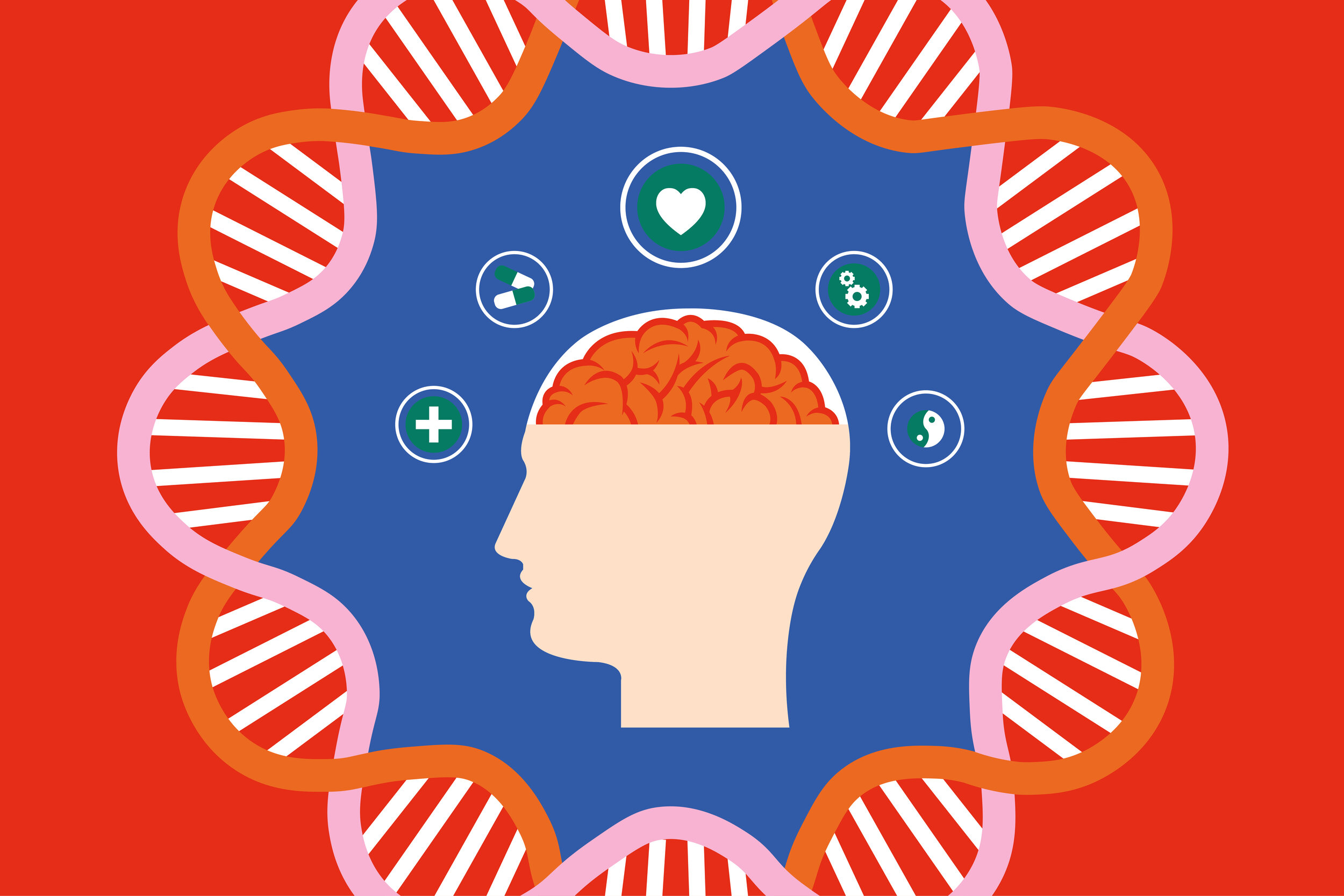LD Primer: What is a learning disability, common symptoms of LD, and how to get a diagnosis
Since we here at Progress Parade are tutors for learning disabilities, we field lots of questions from our parents about learning disabilities. We asked a school psychologist on our team to help clarify some of the most common questions and points of confusion.
What’s the difference between dyslexia (or dyscalculia, dysgraphia) and a learning disability?
Let’s start by clarifying one common area of confusion. The difference between these words is primarily one of which field is providing the diagnosis. Dyslexia, dyscalculia, and dysgraphia are used within medical fields. They are starting to become less common, however, as professionals start to use the up-to-date terminology of specific learning disorder provided in the DSM-5. Educational and legal systems, as opposed to medical fields, use the term specific learning disability.
Historically, the terms dyslexia, dysgraphia, and dyscalculia were defined as neurological disorders that impair a person’s ability to read and/or spell, develop writing skills, and acquire basic arithmetic skills, discrepant from their IQ (meaning that their academic skills were lower than what would be expected based on their intelligence). In 2013, the DSM-5 released a revised version and redefined these disorders under the “umbrella” terminology of specific learning disorder, without the IQ component. This is then further broken down into “with impairment in (reading, writing, or mathematics).” So, under the DSM-5, dyslexia became a specific learning disorder with impairment in reading, dysgraphia became a specific learning disorder with impairment in writing, and dyscalculia became a specific learning disorder with impairment in math.
What is a learning disability?
The term learning disability-more accurately “specific learning disability (SLD)”- comes from the Individuals with Disabilities Education Act (IDEA). Whereas the medical field relies on the DSM-5 to define disability criteria, the education setting relies on the disability categories in IDEA. IDEA defines a specific learning disability as a “a disorder in one or more of the basic psychological processes involved in understanding or in using language, spoken or written, that may manifest itself in the imperfect ability to listen, think, speak, read, write, spell, or to do mathematical calculations.” Conditions such as “perceptual disabilities, brain injury, minimal brain dysfunction, dyslexia, and developmental aphasia” are included in an SLD diagnosis. Learning problems “that are primarily the result of visual, hearing, or motor disabilities, of intellectual disability, of emotional disturbance, or of environmental, cultural, or economic disadvantage” would not qualify as SLD. A state or district may further specify what type of SLD has been identified, such as reading decoding, reading comprehension, written expression, oral expression, math calculation, math problem-solving, etc.
“Whereas the medical field relies on the DSM-5 to define disability criteria, the education setting relies on the disability categories in IDEA.”
Symptoms of a learning disability
Signs that a child might have SLD show as a child begins formal schooling. It is important to keep in mind that there is a range of developmentally appropriate skills in these areas, and well-known errors such as misreading or miswriting “b/d” does not automatically mean that your child has a learning disability. LD online offers some helpful guidelines for what to look for at different ages. If you are unsure, do not hesitate to ask your child’s teacher! They should be able to help you understand what is developmentally appropriate, and what to look out for in growth patterns across the school year. If you are still concerned, you can request a team meeting. The steps for this process will be explained later in this article.
Remember that all children learn at their own pace, but if you notice several related signs of concern, and they do not go away or get better over time, it is important to seek additional information from a professional, as early intervention offers the most opportunities for remediation.
Potential signs of a learning disability in reading include problems recognizing words they already know, poor spelling, difficulties with decoding, trouble with handwriting, slow rate of reading, and/or difficulty understanding what they read or what others are saying. Your child may try to avoid activities that involve reading, instead gravitating to other mediums such as video, audio, or pictures.
For a writing disability, your child might have trouble with spelling, handwriting, grammar, and putting thoughts on paper or following a logical sequence in their writing. Keep an eye out for a poor or awkward grip on their pen or pencil. They may appear to be procrastinating in starting writing assignments or have difficulty with the brainstorming process.
A math disability can show itself in different levels of skill: there are those that have difficulty with basic calculations, while other children are able to complete calculations without difficulty but have trouble with math reasoning or problem-solving. Their math work may appear particularly messy, and they may have trouble understanding or describing math processes. You may find that getting them to start homework assignments is a battle, or they demonstrate frustration and give up early in the assignment.
There are also areas of processing that can indicate a learning disability, such as difficulty following directions (both oral and written) or routines, avoidance of specific academic skills, poor memory, clumsiness, trouble telling time, problems staying organized, impulsivity, “acting out” in school and/or social situations, and rushing through work or working excessively slowly.
How to pursue a potential learning disability diagnosis
If you have noticed that your child is having difficulty learning, you may want to seek an evaluation. Whether you choose to seek a medical opinion or go through the school is an individual decision. If you do decide that you would like information from an outside provider, you will need an educational evaluation to be completed. You can request a referral from your child’s pediatrician, find an evaluator through a hospital, or search clinics or clinicians in your area who provide these services.
If you would like additional information on this, look out for an article I’ll publish soon on how learning disabilties are diagnosed.
“It is important to keep in mind that there is a range of developmentally appropriate skills in these areas, and well-known errors such as misreading or miswriting 'b/d' does not automatically mean that your child has a learning disability.”
Seeking a medical diagnosis: specific learning disorder
In general, an educational evaluator will investigate the following components:
Your child’s development, educational history (including deficits and strengths), and medical history, from birth. They will also want to know of family history of disorders, learning and otherwise.
Description of family and home life. This information is important because the clinician will need to determine if there are other potential causes of the learning difficulties.
Questionnaires. Family members, teachers, and the child will likely be asked to complete rating scales and questionnaires so the clinician can compare their functioning to age-appropriate norms.
Testing academic skills. Your child will complete academic assessments in reading, writing and math that are also compared to peer norms.
Additional testing. If a clinician has concerns or has no background information on vision, hearing, and neurological functioning, they may also assess this to help determine whether another disorder may be causing or adding to your child’s learning difficulties.
Psychological testing. You and your child may be asked questions or complete rating scales to gain a better understanding of your child’s mental health, as social problems, anxiety, or depression can impair or limit academic functioning.
Observations. Throughout the entire evaluation process, the clinician will be observing your child, to note for perseverance, stress responses, willingness to participate in testing, and readiness for sessions. A clinician is only able to draw a conclusion on learning disabilities if they feel they have the most accurate presentation of the child as possible (i.e., if a child is sick, that may be more of an explanation of slower paced reading than an ongoing reading difficulty).
Review of work samples. If possible, provide your clinician with assignments or other work samples from school, so the clinician can see how your child is performing on classroom work.
The clinician will pull all this information together to determine if a specific learning disorder is present. In order to receive such a diagnosis, your child must meet all four criteria set out in the DSM-5.
The first criteria to meet for a medical diagnosis is if the ongoing difficulties started in school-age years and affect at least one academic skill: basic reading, understanding the meaning of what is read, spelling, written expression, number concepts/facts or calculation, and/or math reasoning. These difficulties must have persisted and failed to improve as expected, despite targeted intervention, for at least six months.
The second criteria is that the learning difficulties experienced by your child have been evaluated using standardized achievement tests and found to be significantly lower than peer norms. If they are not significantly lower, a child can still meet the criteria if they were achieving at this level due to exceptionally high levels of effort and ongoing support. These academic skills must also cause problems in school or everyday activities.
The third criteria is that the learning difficulties became apparent in early years of schooling, although exceptions are made when concerns start appearing in upper elementary or secondary school as the demands on student performance increase significantly, such as transitioning from “learning to read” to “reading to learn.”
Lastly, specific learning disorders will not be diagnosed if there is another primary explanation for the academic difficulties, such as an intellectual disability, vision or hearing impairment, emotional or behavioral disabilities, ongoing medical or neurological conditions, or economic or environmental disadvantage, such as chronic absenteeism or lack of access to appropriate instruction and/or intervention.
The clinician will also determine if the level of functional impact is mild, moderate, or severe. This level is related to the degree of support required, both in terms of remediation and accommodation, that the clinician perceives will enable your child to participate effectively in the classroom. If the disorder is mild, there are some difficulties with learning in one or two academic areas, but your child may be able to compensate. If the disorder is determined to be moderate, there are significant difficulties with learning, requiring some specialized teaching and some accommodations or support services. Finally, if the disorder is considered severe, there are severe difficulties with learning, affecting several academic areas and requiring ongoing intensive specialized teaching.
If your child does receive a diagnosis of a specific learning disorder, you can take this information back to the school team, and they can use the information from the report as part of their Individualized Education Plan (IEP) determination process.
Seeking an educational diagnosis: specific learning disability
When applying for a diagnosis, and potential IEP, at schools, the process must follow federal and state guidelines.
As a first step, you will want to send an email or signed and dated written note to the school requesting an evaluation for special education services. This might be addressed to the principal, a special education coordinator, or the school psychologist; if you are unsure, ask your child’s teacher. Per special education law, this is when the process starts, with the formal written request; a verbal request or conversation with your child’s teacher will not be enough. If you already had an outside evaluation completed, it will be helpful to the team if you share that report. Within 10 school days of your written request, the school will respond to your request. If they agree to do the evaluation, they will provide a parental notice and consent note for you to sign that indicates you consent to an evaluation for your child. If they do not agree to complete an evaluation, they will explain why they are not completing the evaluation and any next steps. One example of a next step they may take if they refused the evaluation would be giving your child extra support and instruction at school to see if this remedies your student’s difficulty.
If the school agrees to do the evaluation, the process can vary a bit from that point. You may be invited to an in-person meeting to discuss the components of the evaluation. Specifically, the team should identify for you what types of evaluation (such as testing, observations, interviews, etc) will be completed and who will be doing each component of the evaluation. Sometimes the school will explain this process over the phone or send home this form already completed.
The team will analyze information from a variety of sources, including academic performance both in the classroom and through standardized tests, functional performance, parent input, teacher recommendations, observations, occupational and physical functioning, medical history, social or cultural background, and adaptive behavior. This evaluation must be completed within 60 school days of getting parental consent.
What makes qualifying for an IEP under SLD different from the other categories of disabilities, and from the medical diagnosis process, is that the team must determine how the student has performed under the Response to Intervention (RTI) process.
It is possible your child has already been involved in the RTI process, as the goal of using this approach in schools is that it aims to identify struggling students before they fall behind. Your child may already have been receiving support to help them to be successful in school. RTI is a tiered system, with intensity of support increasing from one level to the next. Tier 1 is an intervention provided to the whole class; Tier 2 is small group interventions, which is the level of support your child may be receiving; and Tier 3 is intensive interventions.
The school will provide targeted interventions and closely monitor student progress. This involves determining how your child responds to research-based interventions. Those interventions might be part of class-wide instruction by breaking students into small groups; if a student is not making progress, they may be pulled from the classroom to work in small groups during enrichment activities.
Teachers will assess progress on a weekly or bi-weekly basis, using measures taking only a few minutes to complete. The data on your child’s progress from these RTI interventions can help the school decide which services and supports to include in the IEP.
Once each team member has completed their assessments, they will pull together a comprehensive report that compiles their findings and this will be shared with you. Ideally this occurs prior to the eligibility meeting, so you have a chance to review their findings and make a list of follow-up questions if needed.
If your child is progressing at a significantly slower rate than is expected in the area of concern, that performance is significantly below performance of peers or expected standards in the area of concern, and their needs in any area of concern are significantly different from the needs of typical peers, this would meet the first criteria of qualifying for eligibility. Further, to qualify for an IEP, those needs must be of an intensity that exceeds general education resources.
Once a student is determined to be eligible for an IEP, the team, which includes you, will identify the short-term and annual educational goals, the minutes of support to be provided and by which team member, how supports will be provided, and what accommodations and modifications are needed.
Keep in mind that the presence of a disability does not automatically mean a child will receive services, nor does bringing an outside medical diagnosis to the team necessarily mean your child meets all criteria for special education eligibility. This can happen for many reasons, but if your child is determined to have a learning disability, but not eligible for an IEP, the team may recommend qualifying for a 504 Plan, which will provide accommodations but not additional instruction.
While both processes can seem intimidating and time-intensive, if it helps you and your child understand better what is interfering with their learning and how to get support that will help them be successful, it is worth it!
For more information, stay tuned for future articles which will help you understand what to do when you first get a learning disability diagnosis, disabilties which are often confused with or related to LD, how to seek school support, treatment tips, and parenting tips. I’ll also answer the common question: can learning disabilities be cured?
A school psychologist answers common questions about learning disabilities.
































